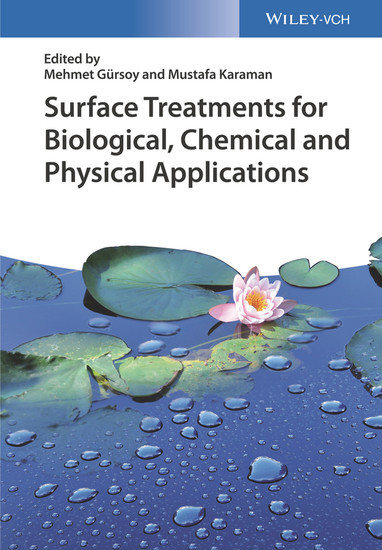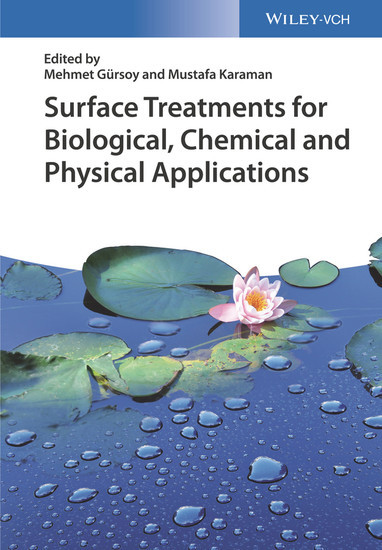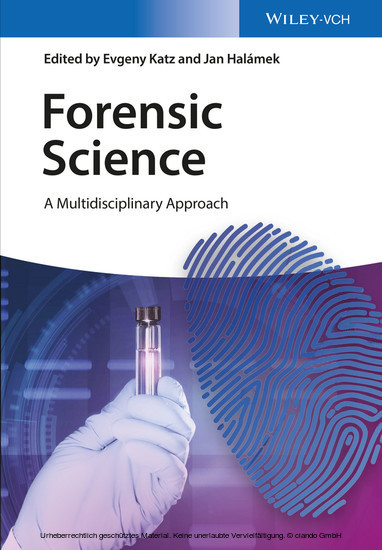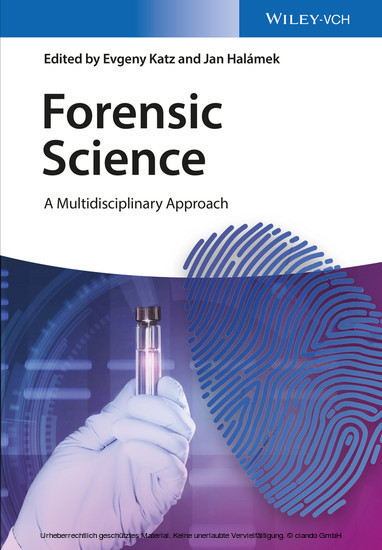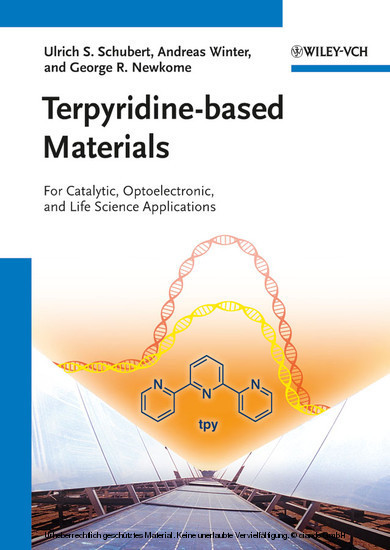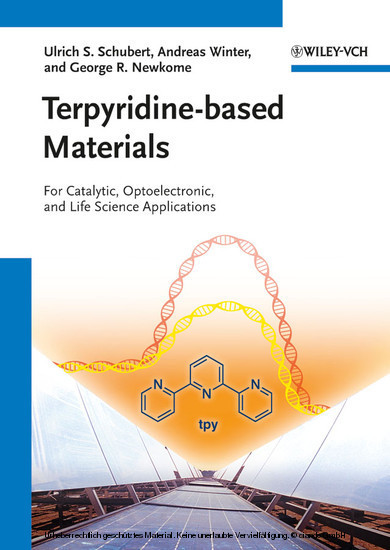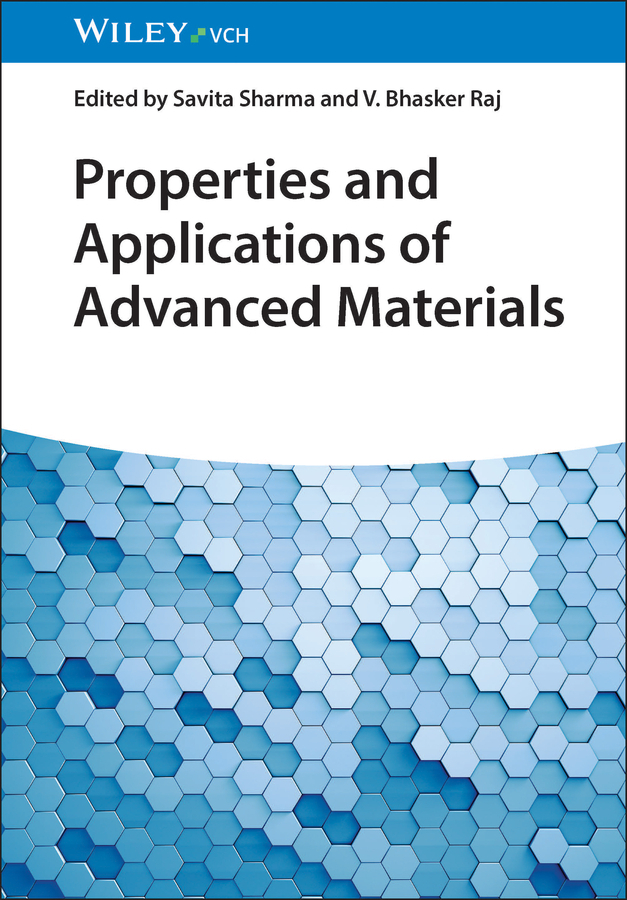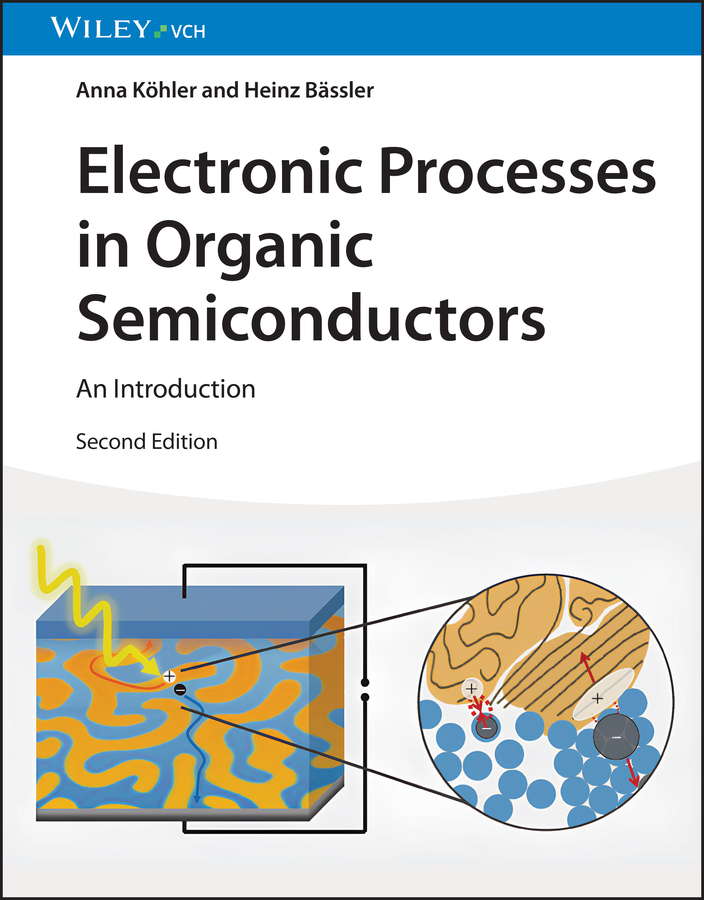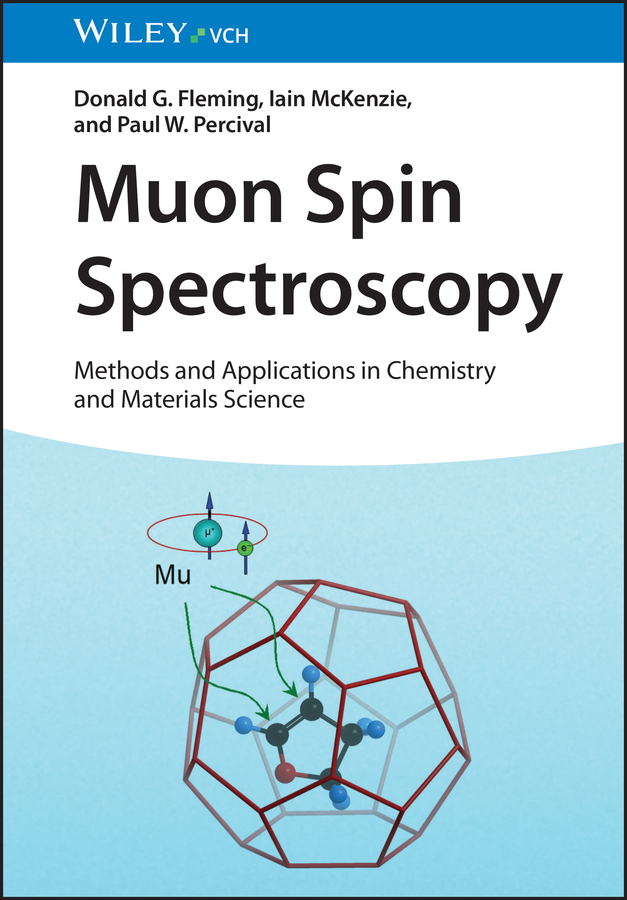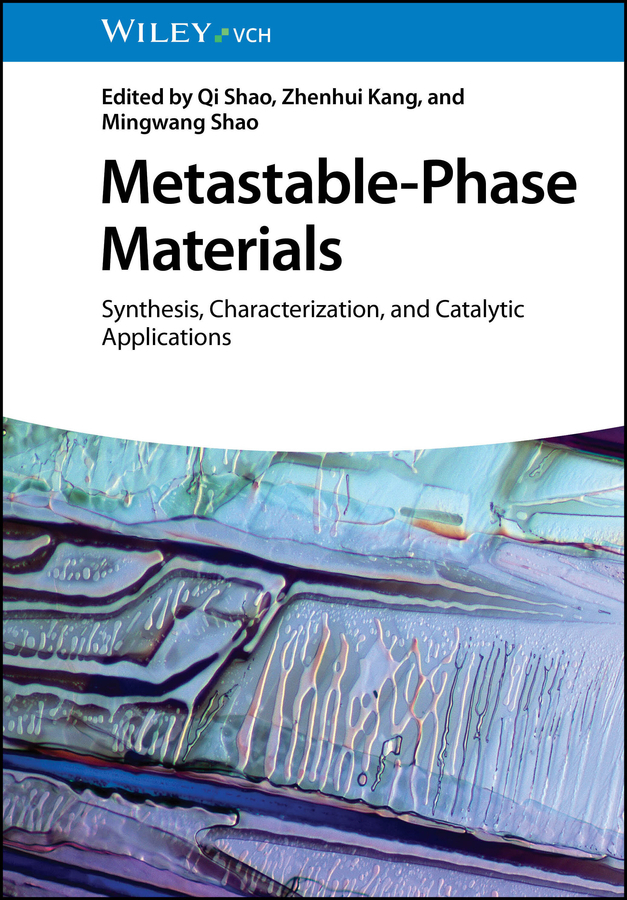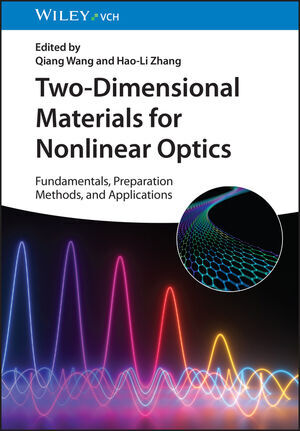Surface Treatments for Biological, Chemical and Physical Applications
A step-by-step guide to the topic with a mix of theory and practice in the fields of biology, chemistry and physics.
Straightforward and well-structured, the first chapter introduces fundamental aspects of surface treatments, after which examples from nature are given. Subsequent chapters discuss various methods to surface modification, including chemical and physical approaches, followed by the characterization of the functionalized surfaces. Applications discussed include the lotus effect, diffusion barriers, enzyme immobilization and catalysis.
Finally, the book concludes with a look at future technology advances. Throughout the text, tutorials and case studies are used for training purposes to grant a deeper understanding of the topic, resulting in an essential reference for students as well as for experienced engineers in R&D.
Mehmet Gursoy is working as research assistant in the department of Chemical Engineering at Selcuk University, Turkey. He has worked in different universities since 2010. His research mainly focuses on functional surfaces, biomimicry, chemical vapor deposition and polymer coatings.
Dr. Mustafa Karaman is an associate professor at the Department of Chemical Engineering, Selcuk University, Turkey. Dr. Karaman has BS and PhD degrees from Middle East Technical University in Turkey. Dr. Karaman's main research topics are surface science, thin films and chemical vapor deposition processes. He has published many papers in the field of surface science since 2005.
Straightforward and well-structured, the first chapter introduces fundamental aspects of surface treatments, after which examples from nature are given. Subsequent chapters discuss various methods to surface modification, including chemical and physical approaches, followed by the characterization of the functionalized surfaces. Applications discussed include the lotus effect, diffusion barriers, enzyme immobilization and catalysis.
Finally, the book concludes with a look at future technology advances. Throughout the text, tutorials and case studies are used for training purposes to grant a deeper understanding of the topic, resulting in an essential reference for students as well as for experienced engineers in R&D.
Mehmet Gursoy is working as research assistant in the department of Chemical Engineering at Selcuk University, Turkey. He has worked in different universities since 2010. His research mainly focuses on functional surfaces, biomimicry, chemical vapor deposition and polymer coatings.
Dr. Mustafa Karaman is an associate professor at the Department of Chemical Engineering, Selcuk University, Turkey. Dr. Karaman has BS and PhD degrees from Middle East Technical University in Turkey. Dr. Karaman's main research topics are surface science, thin films and chemical vapor deposition processes. He has published many papers in the field of surface science since 2005.
1;Cover;1 2;Title Page;5 3;Copyright;6 4;Contents;7 5;List of Contributors;13 6;Preface;17 7;Chapter 1 Surfaces in Nature;21 7.1;1.1 Introduction;21 7.2;1.2 Inspiring Natural Surface Structures;22 7.2.1;1.2.1 Self-Cleaning Surfaces;22 7.2.2;1.2.2 Adhesive Hydrophobic Surfaces;26 7.2.3;1.2.3 Unidirectionally Superhydrophobic Surfaces;27 7.2.4;1.2.4 Fog Harvesting Surfaces;29 7.2.5;1.2.5 Anti-reflective Surfaces;30 7.2.6;1.2.6 Structural Color;31 7.2.7;1.2.7 Drag Reduction and Antifouling Surfaces;33 7.2.8;1.2.8 Adhesive Surfaces;33 7.3;1.3 Conclusion;35 7.4;References;36 8;Chapter 2 Chemical and Physical Modification of Surfaces;43 8.1;2.1 Introduction;43 8.2;2.2 Vapor Deposition Processes;44 8.2.1;2.2.1 Physical Vapor Deposition;44 8.2.2;2.2.2 Chemical Vapor Deposition;49 8.2.3;2.2.3 Atomic Layer Deposition (ALD);66 8.3;2.3 Wet Coating Techniques;68 8.3.1;2.3.1 Sol-Gel Coating;68 8.3.2;2.3.2 Electrospinning;72 8.3.3;2.3.3 Electrolytic Anodization;76 8.3.4;2.3.4 Electroplating;77 8.3.5;2.3.5 Electroless Plating;78 8.3.6;2.3.6 Electrophoretic Deposition;79 8.3.7;2.3.7 Dip Coating;79 8.4;References;80 9;Chapter 3 Surface Characterization Techniques;87 9.1;3.1 Introduction;87 9.2;3.2 Surface Characterization Methods;87 9.2.1;3.2.1 X-ray Spectroscopy Techniques;87 9.2.2;3.2.2 Surface Characterization with FTIR Spectroscopy;92 9.2.3;3.2.3 Nuclear Magnetic Resonance Spectroscopy;99 9.2.4;3.2.4 Electron Microscopes;103 9.2.5;3.2.5 Scanning Probe Microscopy;115 9.2.6;3.2.6 Contact Angle;121 9.2.7;3.2.7 BET (Brunauer-Emmett-Teller) Analysis;122 9.2.8;3.2.8 Terahertz Time Domain Spectroscopy;124 9.3;References;128 10;Chapter 4 Surface Modification of Polymeric Membranes for Various Separation Processes;135 10.1;4.1 Introduction;135 10.2;4.2 Methods of Membrane Surface Modification;136 10.2.1;4.2.1 Blending;136 10.2.2;4.2.2 Surface Coating;138 10.2.3;4.2.3 Photo-Initiated Polymerization;144 10.2.4;4.2.4 Other Surface Modification Methods;147 10.3;4.3 Advancements of Surface-Modified Membranes for Various Separation Processes;148 10.3.1;4.3.1 Wastewater Treatment;148 10.3.2;4.3.2 Drinking Water Production;162 10.3.3;4.3.3 Dense Membrane for Gas Separation Process;173 10.3.4;4.3.4 Solvent Resistant Nanofiltration Membrane for Organic Solvent Application;184 10.4;4.4 Conclusions;191 10.5;References;193 11;Chapter 5 Langmuir-Blodgett Films: Sensor and Biomedical Applications and Comparisons with the Layer-by-Layer Method;201 11.1;5.1 Introduction;201 11.2;5.2 Langmuir-Blodgett Films: General Discussion;204 11.2.1;5.2.1 Deposition Methods, Film Materials, and Substrates;204 11.2.2;5.2.2 Applications of LB Films;207 11.3;5.3 LB Films of Nanoparticles;208 11.4;5.4 LB Films as Sensors;209 11.4.1;5.4.1 Types of Sensors;209 11.4.2;5.4.2 Gas Sensors;210 11.4.3;5.4.3 Sensors for Ions and Other Solution Components;213 11.4.4;5.4.4 Biosensors;215 11.5;5.5 LB Films in Biomedicine;216 11.6;5.6 LB and LbL Methods: a Brief Comparison;217 11.7;References;219 12;Chapter 6 Surface Modification of Biopolymer-Based Nanoforms and Their Biological Applications;229 12.1;6.1 Introduction;229 12.2;6.2 Nanocellulose and Nanochitin;229 12.3;6.3 The Unique Biological Properties of Nanocellulose and Nanochitin;232 12.3.1;6.3.1 Nanocellulose;232 12.3.2;6.3.2 Nanochitin;234 12.4;6.4 Functional Surface Modification;234 12.4.1;6.4.1 For Biomedical Application;235 12.4.2;6.4.2 For Antimicrobial Applications;238 12.5;6.5 Summary and Final Remarks;240 12.6;References;241 13;Chapter 7 Enzyme-Based Biosensors in Food Industry via Surface Modifications;247 13.1;7.1 Introduction;247 13.2;7.2 Biosensors;248 13.2.1;7.2.1 Historical Perspectives of Biosensors;249 13.2.2;7.2.2 Parts of Biosensors: Bioreceptor and Transducer;250 13.3;7.3 Enzymes;254 13.3.1;7.3.1 Enzyme Commission Numbers;255 13.3.2;7.3.2 Enzyme Immobilization;260 13.4;7.4 Application of Enzyme-Based Biosensors in Food Industry;265 13.5;7.5 Conclusion;267 13.6;References;267 14;Chapter 8 Heterogeneous Catalysis from the
| ISBN | 9783527698806 |
|---|---|
| Artikelnummer | 9783527698806 |
| Medientyp | E-Book - PDF |
| Copyrightjahr | 2016 |
| Verlag | Wiley-VCH |
| Umfang | 312 Seiten |
| Sprache | Englisch |
| Kopierschutz | Adobe DRM |

